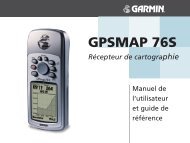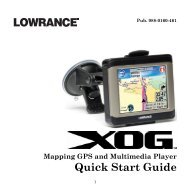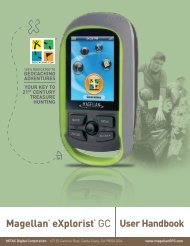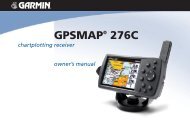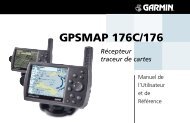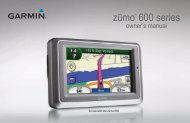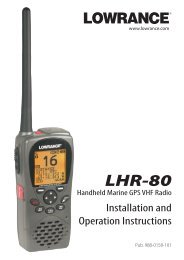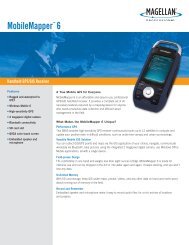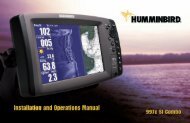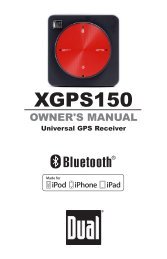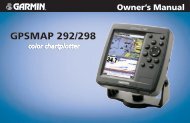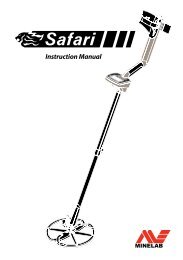X515C DF & X510C Manual - Lowrance
X515C DF & X510C Manual - Lowrance
X515C DF & X510C Manual - Lowrance
Create successful ePaper yourself
Turn your PDF publications into a flip-book with our unique Google optimized e-Paper software.
Transmitter:....................X-515c<strong>DF</strong>:<br />
4,000 watts peak-to-peak/500 watts RMS.<br />
X-510c:<br />
2,400 watts peak-to-peak/300 watts RMS.<br />
Sonar sounding<br />
depth capability:............X-515cC<strong>DF</strong>: 2,500 feet (762 meters).<br />
X-510c: 800 feet (244 meters).<br />
Actual capability depends on transducer configuration<br />
and installation, bottom composition<br />
and water conditions. All sonar units<br />
typically read deeper in fresh water than in<br />
salt water.<br />
Depth display: ................Continuous display.<br />
Audible alarms:..............Deep/shallow/fish/zone.<br />
Automatic ranging: .......Yes, with instant screen updates.<br />
Auto bottom track: ........Yes.<br />
Zoom bottom track:.......Yes.<br />
Split-screen zoom: .........Yes.<br />
Surface water temp: .....Yes.<br />
Speed/distance log: .......Optional (requires optional speed sensor).<br />
NOTICE!<br />
The storage temperature range for your unit is from -4 degrees to +167<br />
degrees Fahrenheit (-20 degrees to +75 degrees Celsius). Extended<br />
storage in temperatures higher or lower than specified will damage the<br />
liquid crystal display in your unit. This type of damage is not covered by<br />
the warranty. For more information, contact the factory's Customer<br />
Service Department; phone numbers are listed on the last page.<br />
How Sonar Works<br />
Sonar has been around since the 1940s, so if you already know how it<br />
works, skip ahead to the next segment on the typographical conventions<br />
used in this manual. But, if you've never owned a sonar fish finder, this<br />
segment will tell you the under water basics.<br />
Sonar is an abbreviation for SOund NAvigation and Ranging, a technology<br />
developed during World War II for tracking enemy submarines.<br />
(<strong>Lowrance</strong> developed the world's first transistorized sportfishing sonar in<br />
1957.) A sonar consists of a transmitter, transducer, receiver and display.<br />
In simple terms, here's how it finds the bottom, or the fish:<br />
3



